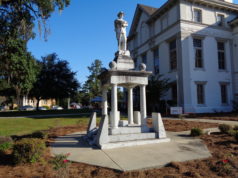When Norman Borlaug
died last month at the
age of 95, the
Associated Press and
most other news agencies
wrote obituaries that, almost casually,
credited him with history’s most stunning
achievement. They said he
saved one billion lives.
Borlaug was the father of
what came to be called the
Green Revolution, a term he
disliked. He preferred to call
what he did “scientific agriculture,”
but what he did was at
least as revolutionary as anything
Lenin or Mao ever
dreamed of.
Borlaug was an Iowa farm
boy who got a PhD in plant
pathology from the University of
Minnesota during the Depression. In 1944
the Rockefeller Foundation offered him a
job on the staff of what today is known as
the International Wheat and Maize
Improvement Center in Mexico. He took it
and changed history.
Borlaug’s great breakthrough was to
cross Mexican wheat, which had already
been bred for resistance to wheat rust,
with a dwarf Japanese variety. The result,
according to the Washington Post’s obituary,
was a strain that was resistant to disease
and capable of producing 10 times
as much grain as unimproved Mexican
varieties.
By the mid-1960s Mexico, which had
known starvation for centuries, was a
wheat-exporting nation.
In 1963, the Center sent Borlaug to
India and Pakistan, two nations that at the
time seemed on the verge of finally proving
Malthus right. He spent the next two
years unsuccessfully trying to convince
them to give his improved wheat varieties
a trial.
Finally, in 1965, with the prospect of
massive famine and tens of millions of
deaths imminent throughout the Indian
subcontinent, both governments agreed.
Borlaug arranged for a convoy of 35
trucks to take high-yield seeds from his
experimental station in
Mexico to the coast for shipment
by sea to Pakistan and
India.
What followed was a saga
worthy of a Frank Capra
movie.
The original plan was to
ship the seeds from the
Mexican port of Guaymas, but
they got held up by Mexican
customs and wouldn’t have
arrived in time for planting.
Borlaug redirected his convoy to the
port of Los Angeles in the U.S. When he
got to the border he was stopped by U.S.
border police trying to enforce a ban on
seed importation.
When the convoy got to L.A. it was
stopped by the National Guard and the Watts riots, which had blocked access to L.A. harbor.
Somehow, Borlaug got his seeds loaded on a ship, and it sailed.
Twelve hours later war broke out between India and Pakistan.
The
shipment finally arrived late in the planting season, and Borlaug and
local agricultural scientists immediately started planting, sometimes
within sight of artillery flashes. A week later, the seeds started
germinating — at half the normal rate. It turned out they had been
damaged by over-fumigation in a Mexican warehouse. Borlaug immediately
ordered all locations to double their seeding rates.
It is written, in the 126th Psalm, that “They that sow in tears shall reap in joy.” And so it came to pass.
Despite
everything, Borloug’s initial yields were 70 percent better than
anything in the history of agriculture in South Asia. By 1968, Pakistan
was self-sufficient in wheat production. India followed a few years
later. In Pakistan, wheat yields rose from 4.6 million tons in 1965 to
8.4 million tons in 1970. In India, they rose from 12.3 million tons to
20 million. Last year, India’s wheat harvest reached 73.5 million tons.
About
the time Borlaug was putting in his first crops in Pakistan and India,
agronomists at the Consultative Group on International Agricultural
Research in the Philippines developed high-yield dwarf rice varieties
using his techniques. A similar explosion in rice production ensued as
the varieties spread throughout Asia.
Throughout
Asia, food production grew faster than population. Agricultural
surpluses in India and China helped ignite their economies — and damp
down their birth rates.
The world’s rendezvous with Malthusian destiny — which had widely been predicted for the mid-1970s — was postponed indefinitely.
And in 1970, Norman Borlaug was awarded a Nobel Prize.
There is no Nobel Prize for agronomy; the
science prizes are given for medicine, chemistry and physics. Borlaug
was awarded the Nobel Peace Prize — on the theory that famine and
starvation lead to injustice, violence and war.
So what might you suppose that the peace and justice community would make of all this?
It
turns out they don’t like it. They didn’t like the fact that Borlaug’s
crops required irrigation, fertilizer and pesticides. They didn’t like
the fact that they were monocultures, or even that they were created by
cross-breeding. They especially didn’t like the fact that American seed
companies made money selling seed to the Third World.
And
they didn’t take it lying down. So, just when Africa was on the cusp of
mass starvation in the early 1980s, they persuaded the Rockefeller and
Ford Foundations to quit funding Borlaug’s institute.
I wonder if they have ever figured how grotesquely self-centered and malignantly evil that act was.
The
Third World sure has. The Greens’ hostility to the Green Revolution is
one reason why countries like China and India consider western
environmentalists’ warnings about global warming to be little more than
Bourgeois conceits.
(Fortunately,
in 1984, during an Ethiopian famine Japanese industrialist Ryoichi
Sasakawa stepped up and provided funding for bringing the Green
Revolution to Africa. He also convinced Borlaug, who by then was
semi-retired, and Jimmy Carter to lead the effort.)
In
a few weeks, President Obama will fly to Oslo to pick up the most
undeserved Peace Prize in the history of the awards. While in the air,
he ought to ask himself this: Borlaug saved one billion lives. How many
lives have I saved?
And
the next time Steve Demos and his acolytes set out to trash scientific
agriculture they might ask themselves the same question.
Respond: [email protected]














